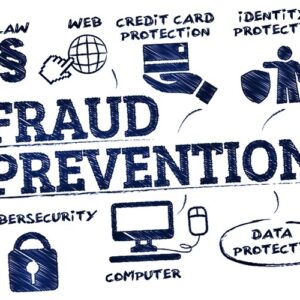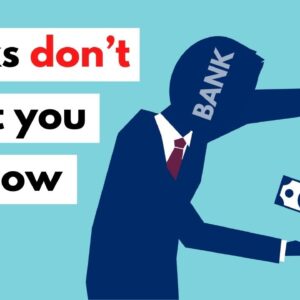
Introduction.

Let’s be real — student loans are like that clingy ex you can’t seem to shake off. They’re with you through job hunting, apartment hunting, even while you’re trying to build credit. But what if I told you there’s hope? Whether you’re dreaming of getting those loans forgiven or just want lower monthly payments through refinancing, this guide breaks it all down.
In today’s world where every dollar counts, understanding your student loan options isn’t just helpful — it’s critical. Ready to finally breathe easier about your debt? Let’s get into it.
Understanding Student Loans.
What Are Student Loans?
Student loans are borrowed money meant to help cover the cost of college or graduate school. They can cover tuition, books, housing — pretty much anything education-related. But unlike grants or scholarships, you’ve got to pay these back. With interest.
Federal vs. Private Student Loans
Think of federal loans as government-backed — they usually offer better perks like income-driven repayment plans and forgiveness options. Private loans? Those come from banks or lenders and are more like regular personal loans.
| Feature | Federal Loans | Private Loans |
|---|---|---|
| Repayment Flexibility | ✅ Income-Driven Plans | ❌ Limited Options |
| Forgiveness Options | ✅ PSLF, IDR, Teacher Programs | ❌ Rare to None |
| Fixed Interest Rates | ✅ Yes | ✅/❌ Varies |
How Interest Accumulates.
Interest on student loans starts accumulating as soon as the loan is disbursed (except for subsidized federal loans, where the government helps out during school). If you’re not paying while studying, you could graduate with a much higher balance.
What is Student Loan Forgiveness?
Definition and Purpose.
Student loan forgiveness wipes out part or all of your federal student debt if you meet specific requirements. It’s like getting a “debt pardon” — sounds dreamy, right?
Who Qualifies for Forgiveness?
Qualifying isn’t as simple as wishing it into existence. Usually, you’ll need to:
- Work in public service or as a teacher
- Make 120 qualifying payments
- Be enrolled in an eligible repayment plan
Types of Student Loan Forgiveness Programs.
Public Service Loan Forgiveness (PSLF).
This one’s a biggie. If you work full-time for the government or a non-profit and make 120 on-time payments under a qualifying repayment plan, you could get the rest of your loan forgiven.
More info: Federal Student Aid PSLF Program
Teacher Loan Forgiveness.
Teachers in low-income schools could be eligible for up to $17,500 in forgiveness after five years. Not bad if you’re molding young minds!
Income-Driven Repayment Forgiveness (IDR).
After 20–25 years of payments based on your income and family size, the remaining balance may be forgiven. But beware — this forgiven amount might be taxable.
Perkins Loan Cancellation.
If you have Perkins Loans and work in certain public service jobs, you might be eligible for partial or full cancellation over five years.
Closed School Discharge and Borrower Defense.
If your school shut down or misled you, the government might cancel your loan entirely.
How to Apply for Student Loan Forgiveness.
Step-by-Step Process.
- Determine eligibility (check your job type, payment history)
- Fill out the right forgiveness application
- Submit employment certification (for PSLF)
- Keep making payments while your application is under review
Common Pitfalls to Avoid.
- Not submitting your employment certification annually
- Missing or late payments
- Being on the wrong repayment plan
Pros and Cons of Loan Forgiveness.
Benefits.
- Huge financial relief
- Lower stress and improved credit
- Motivates public service work
Hidden Drawbacks.
- Long qualification periods
- Complex paperwork
- Possible tax bomb (especially with IDR forgiveness)
What is Student Loan Refinancing?
Definition and Key Features.
Refinancing means swapping your existing student loans for a new one — ideally with a lower interest rate. This can lower your monthly payment and save you big over time.
How It Differs from Forgiveness.
Forgiveness gets rid of debt, while refinancing restructures it to be more manageable.
When Should You Consider Refinancing?
Signs It’s Time to Refinance.
- Your credit score has improved
- You have a stable income
- Interest rates have dropped
Factors to Consider Before Refinancing.
- You lose federal protections like IDR and PSLF
- Private lenders rarely forgive loans
- Check for origination fees or hidden charges
Best Student Loan Refinancing Companies in 2025.
SoFi.
- Competitive rates
- Career coaching and unemployment protection
Earnest.
- Custom repayment plans
- No fees
Laurel Road.
- Best for healthcare professionals
- Offers bonuses
Credible (Comparison Platform).
- Compares multiple lenders
- Saves time and money
Compare options here: Credible Student Loan Refinancing
How to Refinance Your Student Loans.
Steps to Refinance Successfully.
- Shop around for rates
- Choose a lender
- Submit your application
- Get approved and pay off your old loans
Documents You’ll Need.
- Proof of income
- Loan balance statements
- ID and SSN
- Degree verification
Refinancing vs. Forgiveness: Which One is Right for You?
Comparative Analysis.
| Feature | Forgiveness | Refinancing |
|---|---|---|
| Loan Eliminated? | ✅ Yes (if qualified) | ❌ No |
| Monthly Savings | 💸 Gradual | 💸 Immediate |
| Best For | Public servants | High earners with good credit |
Real-Life Scenarios.
- If you work in public service = Go for forgiveness.
- If you earn $100K+ with a 750+ credit score = Refinancing might be better.
Tax Implications of Loan Forgiveness & Refinancing.
Are Forgiven Loans Taxable?
In most cases, yes. Especially under IDR. But under current laws (until 2025), forgiven balances are temporarily tax-free.
How Refinancing Affects Your Taxes.
Interest you pay may be tax-deductible — up to $2,500 annually.
Tips to Manage Your Student Loans Efficiently.
Budgeting Tips
- Use apps like Mint or YNAB
- Create a sinking fund for extra payments
Avoiding Default.
- Enroll in auto-pay
- Contact your servicer before you miss a payment
Future of Student Loan Forgiveness & Refinancing.
Government Plans and Legislative Updates.
The Biden administration has rolled out limited relief. Stay tuned — policies are changing fast.
Expert Predictions.
More income-driven plans and expanded forgiveness options could be on the horizon, especially before elections.
Conclusion.
Student loan forgiveness and refinancing aren’t just buzzwords — they’re lifelines for millions. The best path depends on your career, income, and future goals. Whether you’re aiming for freedom through forgiveness or flexibility through refinancing, the time to act is now.
You’ve got the map. Now it’s time to chart your course.
FAQs.
1. Can I refinance my federal student loans?
Yes, but they become private loans, and you lose access to federal benefits like PSLF and IDR plans.
2. Will student loans be forgiven automatically?
No. You must apply and meet specific qualifications depending on the forgiveness program.
3. Does refinancing hurt your credit score?
Initially, it may cause a small dip due to the credit inquiry, but long-term, it can improve your score with lower payments and better management.
4. What credit score do I need to refinance?
Most lenders require a credit score of at least 650, but the best rates go to those above 720.
5. Can I refinance more than once?
Absolutely! If rates drop again or your financial situation improves, refinancing a second time might make sense.






This Post Has One Comment